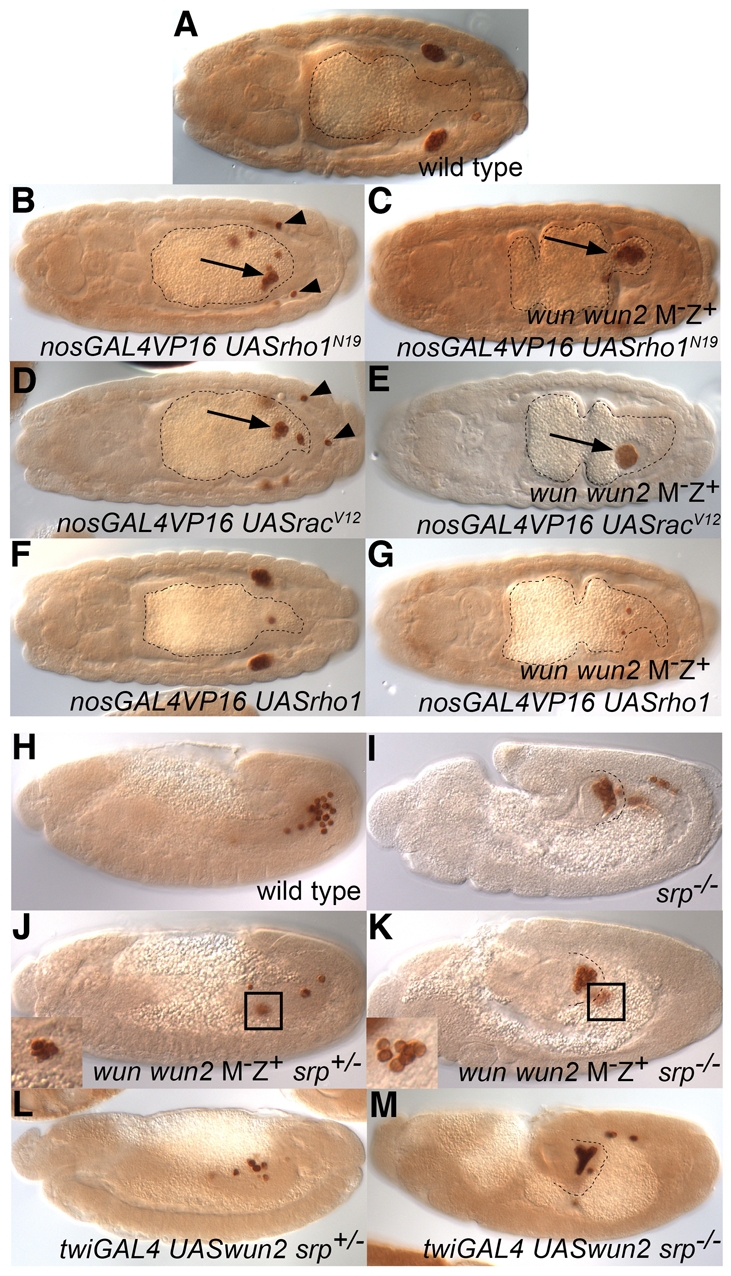Fig. 4.

Blocking germ cell migration suppresses the death of wun and wun2 double-mutant germ cells. (A-G) Dorsal view of stage 15/16 Vasa-stained embryos with midguts outlined. (A) Wild-type embryo. (B-G) Embryos laid by nanosGAL4VP16/+ (B,D,F) or wun wun2 germline clone; nanosGAL4VP16/+ (C,E,G) females crossed to UASrho1N19 (B,C), UASracV12 (D,E) or UASrho1 (F,G) males. Germ cell expression of dominant-active Rac (racV12) and dominant-negative Rho1 (rho1N19), but not wild-type Rho1, in wild-type embryos results in most germ cells remaining inside of the midgut (arrows; B,D). The few germ cells that do mange to cross the gut epithelium are scattered in the soma (arrowheads). Germ cell expression of dominant-active Rac and dominant-negative Rho1, but not wild-type Rho1, in germ cells lacking wunens suppresses the germ cell death (C,E,G). The surviving germ cells are found in a clump in the gut (arrows; C,E), with no germ cells in the soma. (H-M) Lateral view of stage 12 or 13 Vasa-stained embryos with the extent of the posterior midgut outlined for srp mutant embryos. (H) Wild-type embryo. (I) srp6g/srp6g embryo. (J,K) wun wun2 M–Z+ embryos that are also zygotically srp6g heterozygous (J) or homozygous (K). At stage 12, many small, irregularly shaped dying germ cells can be seen in a clump in wun wun2 M–Z+ embryos (J, inset). In wun wun2 M–Z+ srp sibling embryos, germ cells can be found in a tight clump in the gut but many are found outside with wild-type morphology and size (K, inset). (L,M) Embryos overexpressing wun2 in the mesoderm using twiGAL4 and UASwun2 have reduced germ cell numbers owing to germ cell death (L), which can be suppressed in srp6g homozygous embryos (M).
